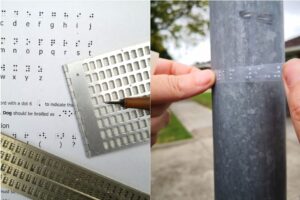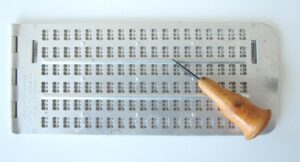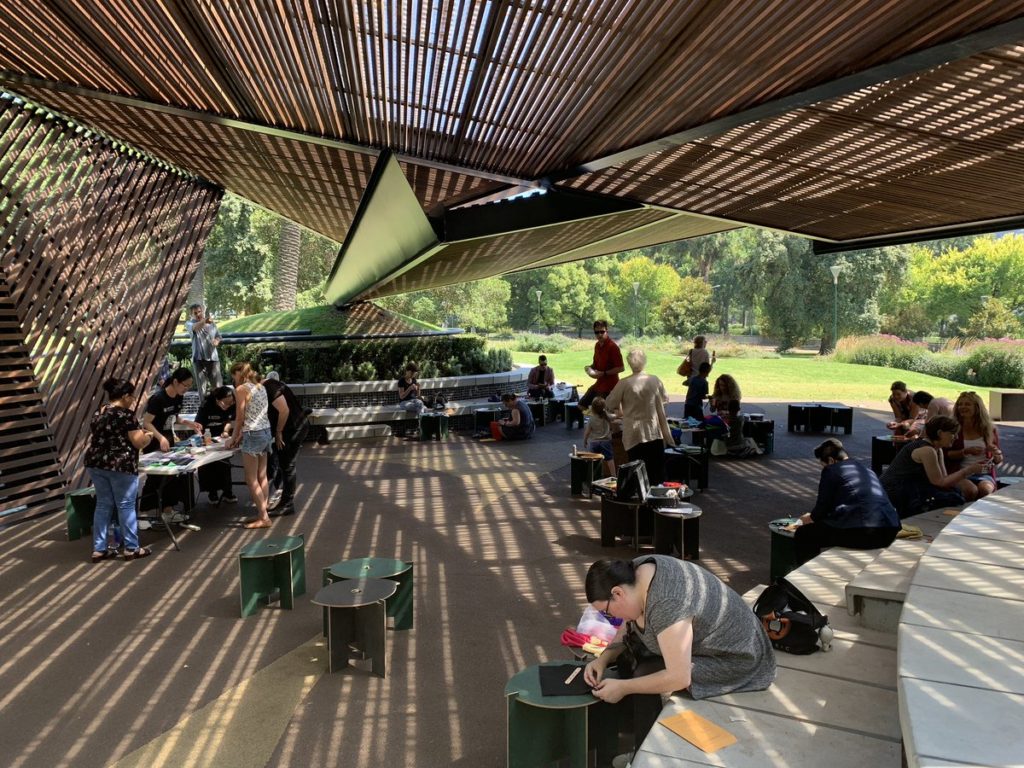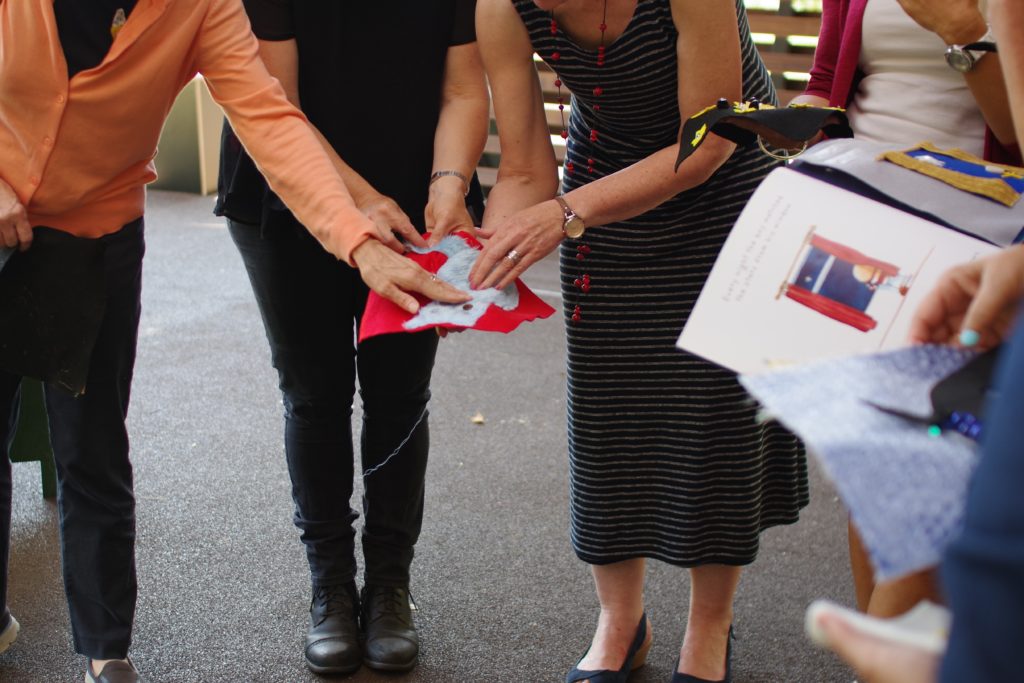As part of Melbourne Knowledge Week, Monash University’s Inclusive Technologies research group partnered with the Australian Braille Authority to host a free braille bombing event. Participants were provided with the equipment and know-how to create braille labels for signage in Wesley Place, Melbourne, to help improve accessibility and inclusion for people who are blind or have low vision.

What is braille and why is it important?
Braille is a tactile system of representing the written word using a combination of six dots. It was invented by a blind boy, Louis Braille, almost 200 years ago and it is still used as the primary medium for reading and writing by people who are blind or have low vision worldwide.
How can I learn braille?
Download and print this braille alphabet sheet to learn the braille alphabet and numbers. This is all you will need to know for braille signage in Australia.
But it’s not just letters and numbers. Did you know that braille has hundreds of wordsigns, shortforms and contractions to help make braille faster to read and write? That’s is why typing is faster in braille than in print! To learn the secrets of contracted braille, UEB online is a free self-paced braille learning program available at https://uebonline.org/.
Using a slate and stylus
A slate and stylus is the earliest and most simple way of creating braille.

Braille slates can be purchased commercially or you can 3D print your own. This slate was designed in Australia by NextSense and can be downloaded for free for 3D printing from https://www.thingiverse.com/thing:2705166.

Download and print this slate & stylus cheat sheet to learn how the braille alphabet and numbers should be written in reverse when using a slate and stylus.

